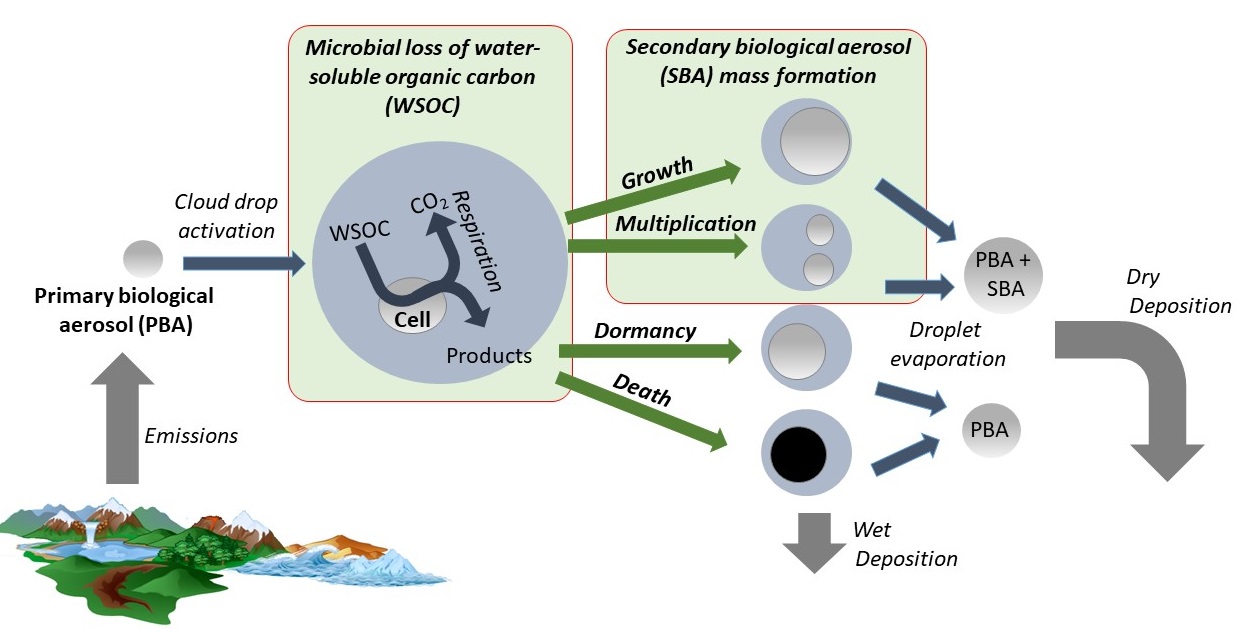
Barbara ERVENS
Directrice de recherche, (DR2, CNRS)Coordonnées
Activités / CV
RESEARCH EXPERIENCE
2021 – present Senior Scientist, National Centre for Scientific Research (CNRS), Institute of Chemistry of Clermont-Ferrand, University Clermont Auvergne,
2018 – 2021 Research Scientist, Institute of Chemistry of Clermont-Ferrand, University Clermont Auvergne
2011 – 2018 Research Scientist III, Cooperative Institute for Research in Environmental Sciences (CIRES), University of Colorado, and NOAA, Earth System Research Laboratory, Chemical Sciences Division, Boulder, CO, USA
2008 - 2011 Research Scientist II, Cooperative Institute for Research in Environmental Sciences (CIRES), University of Colorado, and NOAA, Earth System Research Laboratory, Chemical Sciences Division, Boulder, CO, USA
2005 – 2008 Research Scientist I, Atmospheric Science Department, Colorado State University, Fort Collins, and NOAA, Earth System Research Laboratory, Chemical Sciences Division, Boulder, CO, USA
2002 – 2004 Postdoctoral Fellow, Cooperative Institute for Research in the Atmosphere (CIRA), Colorado State University, Fort Collins, and NOAA, Environmental Technology Laboratory, Boulder, CO, USA
2001 – 2002 Postdoctoral Fellow, Institute for Tropospheric Research,
1998 – 2001 Research Assistant, Institute for Tropospheric Research,
1997 – 1998 Research Assistant, Institute for Physical and Theoretical Chemistry, University
|
Research Assistant, Institute for Physical and Theoretical Chemistry, University |
Thèmes de recherche
 hase of cloud droplets and wet particles represents a medium where efficient chemical reactions can occur that lead to the modification of the composition of aerosol particles, cloud/rain water and the surrounding gas phase. Less attention has been given to the role of biological processes that occur in clouds. Microorganisms, such as bacteria, cannot not only act as IN but they also utilize organic substrates in cloud droplets and transform them into CO2 and other products, in competition to chemical processes. Thus, in order to understand the formation, evolution and radiative impact of clouds interdisciplinary efforts are needed to improve upon the description of relevant processes on all scales.
hase of cloud droplets and wet particles represents a medium where efficient chemical reactions can occur that lead to the modification of the composition of aerosol particles, cloud/rain water and the surrounding gas phase. Less attention has been given to the role of biological processes that occur in clouds. Microorganisms, such as bacteria, cannot not only act as IN but they also utilize organic substrates in cloud droplets and transform them into CO2 and other products, in competition to chemical processes. Thus, in order to understand the formation, evolution and radiative impact of clouds interdisciplinary efforts are needed to improve upon the description of relevant processes on all scales.
My research focuses on the development and application of small-scale models that describe in detail chemical, microphysical and biological processes in clouds.
Find a complete publication list sorted by topics here.
Previous work includes
- the development of detailed CHEMICAL mechanisms of reactions occurring in cloud droplets. My early work was the development of the chemical aqueous phase radical mechanism (CAPRAM). In addition, I was one of the first researchers who suggested that in addition to sulfate, also organic aerosol may be formed in cloud droplets and in aqueous aerosol (aqSOA).
- the implementation and analysis of MICROPHYSICAL data and processes in cloud models. We showed that the representation of CCN properties can be largely simplified for most cases. In detailed model studies of ice microphysics, we explored the sensitivities and key parameters of ice nucleation in mixed-phase clouds.


